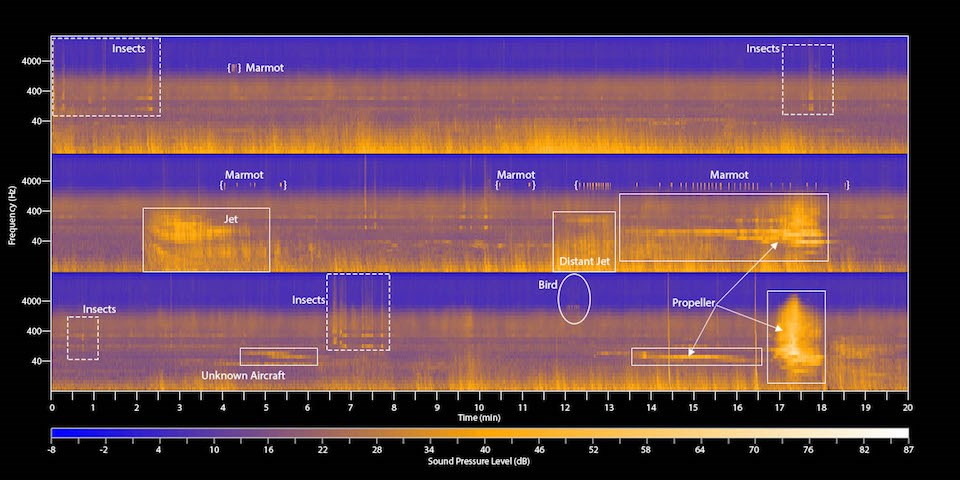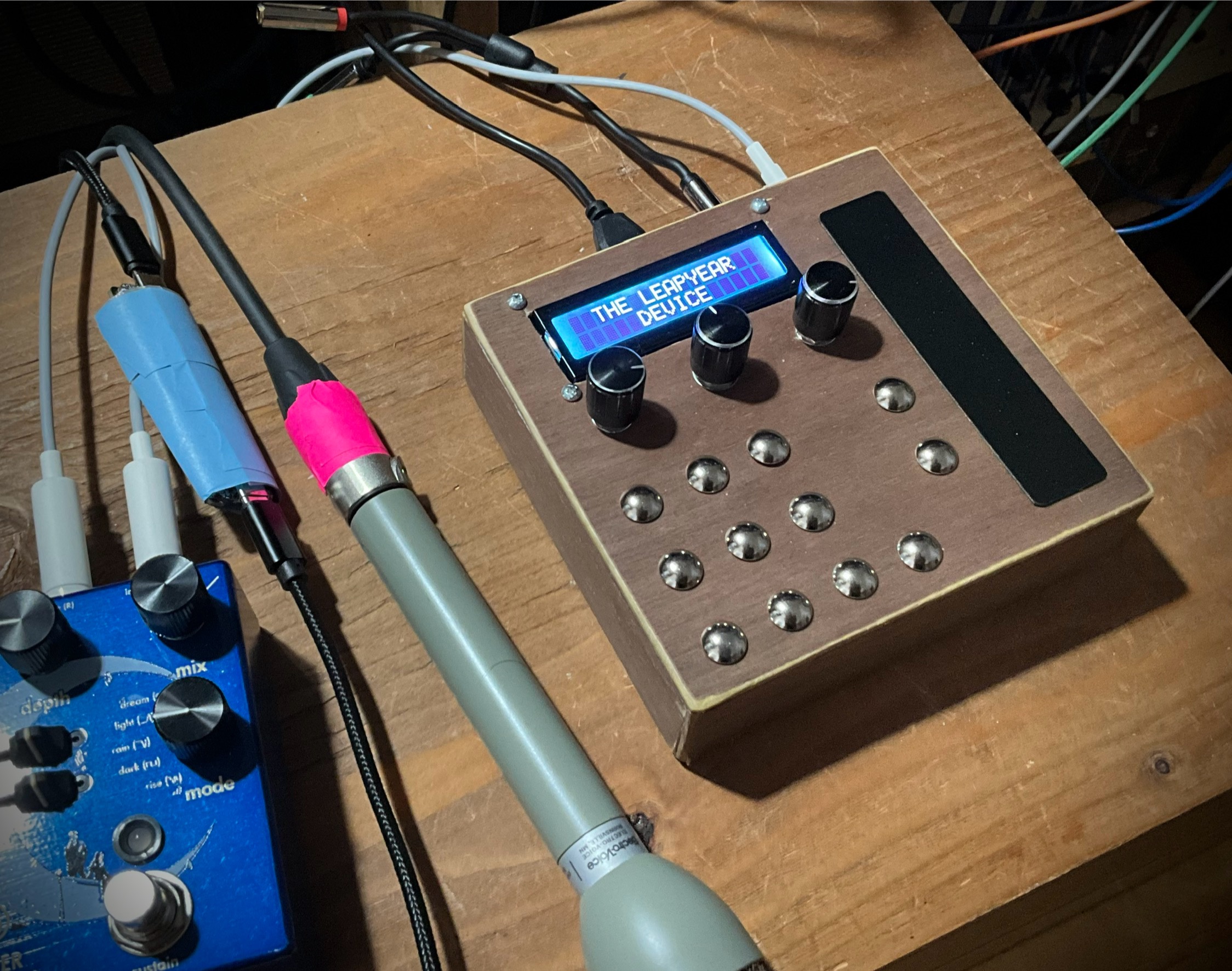Harmonic Soundscape Manipulation
technologies and techniques
for extracting music from the world
in the world
It is a trivial matter to do all manner of manipulations to sonic materials in a studio setting. When in the field, however, a new story emerges. One in which control is relinquished to nature, and an artist needs to be prepared. It becomes an improvisation. A conversation. It would be nice to have a grammar available to make the most of such a conversation.
This is where my project comes in. As an effort to develop and utilize techniques and tools that will allow myself and others to converse with nature, in nature. I have several projects, past and present, that have touched on this idea. Traditionally this work is done in a studio, in a Digital Audio Workstation (DAW), and is highly composed. Even when the organics of improv creep into such a work, it is still locked into a recording, or several recordings that are only later triggered at the right time.
My intention is to investigate techniques and technologies that can provide an artist the opportunity to act and react to the place they are in. My explorations will fall into four catagories.
sound sources
modulators
manipulators
deployments
Sound Sources
Analyze sites for possible sound sources. Try different microphone setups, placement and polar patterns. Survey sites for possible Electromagnetic field generators that can be picked up with EM microphones. Utilize spectral analysis and FFT filtering techniques to isolate particular sounds present at the site. Catalog sources of interest for future investigations.
Modulators
Analyze sites for modulation sources. Utilizing sensors and geographic data. Sensors such as Light, humidity, soil PH, wind, motion. Tap into weather and seismic data from public data sets provided by satelites and other sources. Perhaps local traffic.
Manipulators
How to stitch it all together. Develop delays and filters and connect the sound sources with modulators. Write the synthesis and sampling softwares to handle this web. Develop hardware interfaces utilizing single board computers, such as bela and Raspberry Pi platforms, and other opensource hardware options, such as monome grid.
Deployments
Explore multichannel speaker configurations in situ. Wired speakers as well as wireless. The use of transducers and resonators, to use the place itself as a means of amplification. Perhaps utilize other sound makers, wind chimes, aeolian harps.
There will also be the development of methodolgies. That is to say, what should be done when approaching a site? Setting up systems, finding potential sources for sounds and modulations. Can a checklist be created? Best practices? Is this preceded by visits to the site beforehand, once? twice? A week before? A day?
This endeavor is a journey to answer some of the questions that I have now, but, possibly more importantly, it is also an effort to learn what the best questions to ask even are. I have a vision, and I have a confidence that the technology is here, I am only trying to put together the time and focus to stitch together the disparate parts into a language that I will be able to utilize for my own future work. To also share this knowledge and resources with others so that I may hear what they have to say as well.
Below I highlight several projects of mine that required a fair amount of research and exploration to accomplish. I hope that they may illustrate my abilities in seeing through projects of considerable complexity and across a variety of digital art disciplines.
_awed
This project is an instrument I made using opensource hardware built by Monome. Specifically the norns and grid. Using Supercollider and Lua coding languages I developed the synthesis engine and instrument interface to perform it with. The above video is a visual demonstration and tutorial that was created to share with the community. Below are links to a forum discussion on the project as well as the github repository with the code and additional information.
GitHub
Lines Forum
the leapyear device
This is a project that I wrote a bit more about here. The main takeaways are that it is a vision I had for an instrument that didn't already exist in the commercial space. The instrument is a Granular Loop Computer, which is not all that unique but I had a particular configuration of functions I was looking for and found that making it myself would be the best way to get what I was after, as well as to be an opportunity to learn more.
Through the process I was able to learn quite a bit more about how to use the Pure Data programming language, as well as to extend my UI design skills and hardware building capabilities by working with a new, at the time, platform called Bela. Along the way I came up with a method of handling many parameters that I call a Binary Input Interface which I am developing as a stand alone interface for midi and I2C capable instruments.
Below is an excerpt from a performance I did using the Leapyear Device mentioned above. In addition to the hardware used for the sound making I also created the streaming video interface that the performance was streamed from.
These kinds of projects start out as one thing and by the end can become something else, or so much more than we could have imagined. I look forward to this next phase of my artistic practice and uncovering what might be possible at the end of this journey.
One of my hopes being, to tune and enhance the world around us.
Thank you
- Darren Russell


